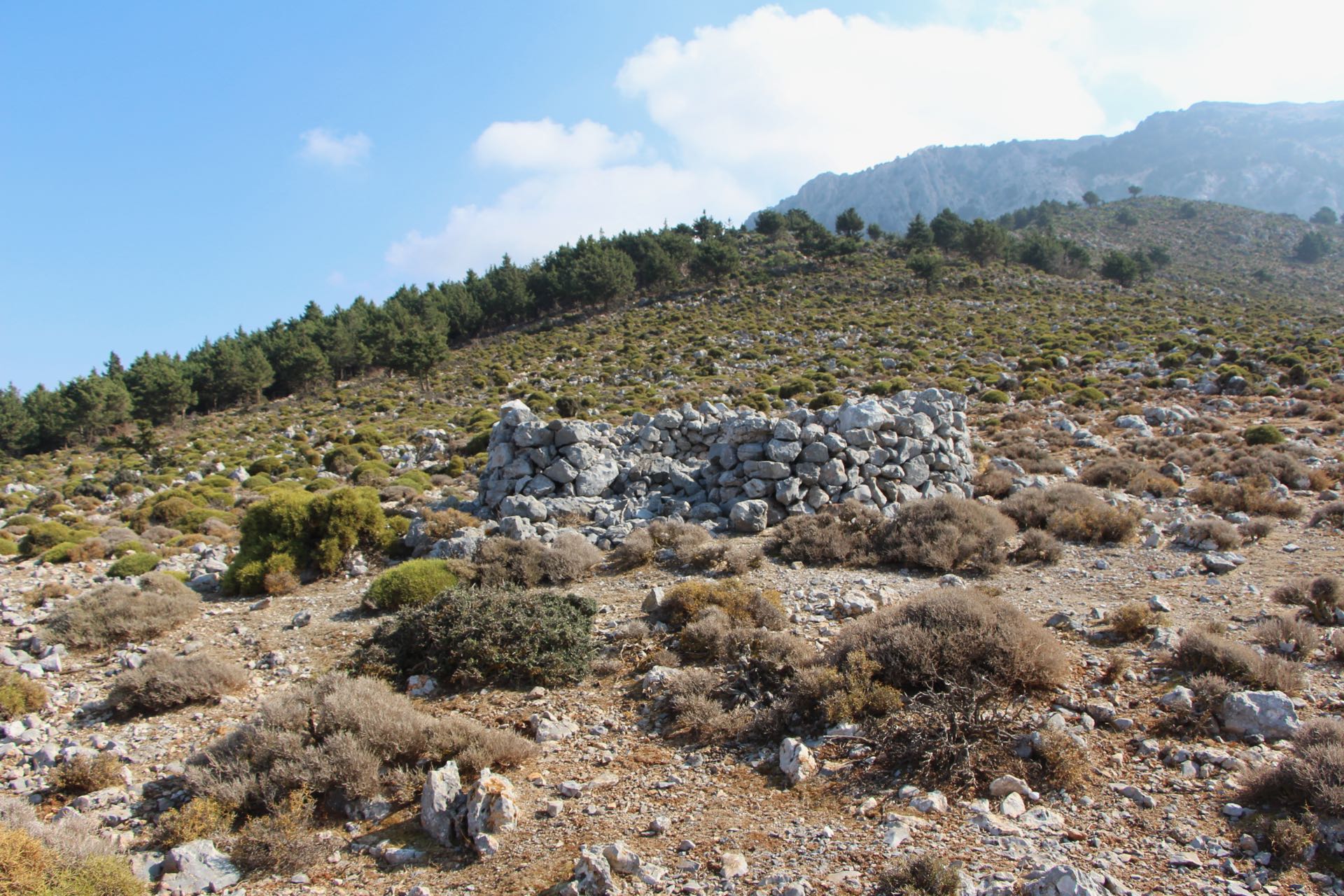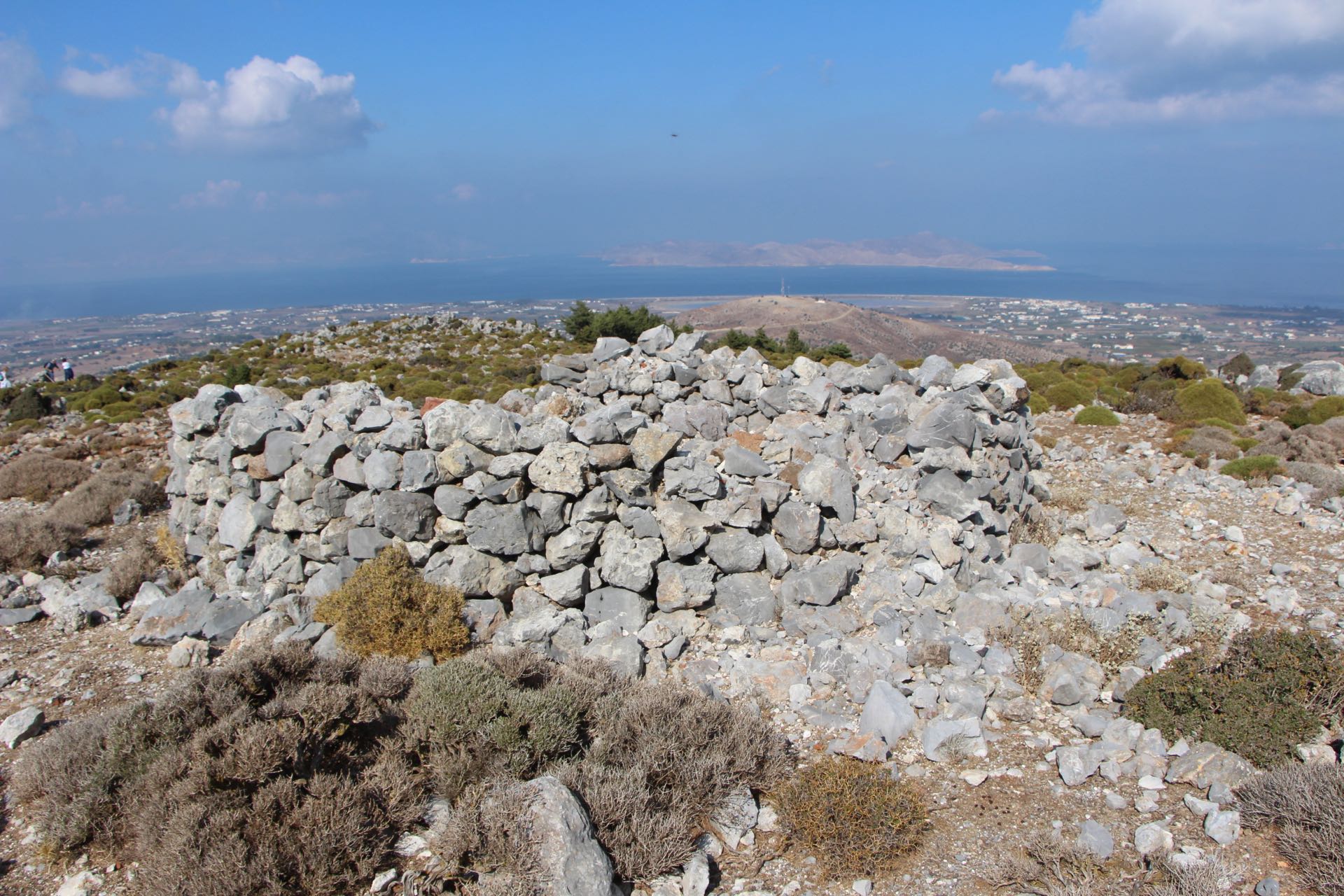The pictures you see in this post were taken around the Old Pyli area, but limekilns can be found in many places on the island, mostly in the Dikaios mountain area. Limestone is not the most abundant rock on the island but it was used as a fertiliser and a building material namely as mortar and whitewash.
The limekilns were built in areas where lime stones and shrubs as well as some hard packed earth -to be used as insulation- were readily available, and usually under cover from the wind. A hole going down about 1,5 to 2 meters underground was dug, corresponding to one third of the height of the total structure and then adorned with a mix of stones and soil 80 to 120cms thick, all along the circular periphery of the structure. The interior side of the wall was smeared with mud (lime kilns were often built near streams so that mud was easily accessible) in order to provide better insulation. The diameter of the interior could reach about 4 meters and with the height being around the same the total theoretical capacity of such a big limekiln was around 30 tons. Of course sizes varied and often enough the limekilns were smaller with the average production being around 12 to 15 tons of quicklime according to the locals. A large quantity of limestones was then collected. Some flat ones were selected and amassed peripherally with the diameter of the structure slowly being narrowed to create a dome like shape while spaces were left between the stones in order to allow the flow of air. The dome would reach 1 meter above ground level so 2.5 meters above the floor. A large stone was slotted into the apex. A door/opening was created at ground level of 60cms by 60cms using large stones, giving access to the open space under the dome. The purpose of this opening was to provide access in order to feed the fire. On top of the dome more stones were added again always with sufficient spaces between them. The building of the limekiln would take two people ten to fifteen days to accomplish.
A lot of branches, bushes, branches were then bundled into fagots, compressed under some stones and piled up. To give you an idea, to produce 30 tons of quick lime, 50 tons of feed was needed for the fire. While the building was the task of a couple of people keeping the fire alight was a much more arduous and labor intensive duty. Temperatures needed to reach 1000 degrees Celsius in order to extract the carbon dioxide from the limestone so as to produce the quicklime. This level of heat would get pretty unbearable after a couple of hours, for those who were feeding the fire, making shifts absolutely necessary since the fire needed to be maintained for at least sixty to ninety hours. Once the flame would go blue and the pile of limekiln become more compact, the job would be done and the limekiln would be left to rest for around ten days once the door was sealed with mud and stones to maintain the heat level. At the end of the ten day period the owners would return to their limekiln, open up the door, and collect the quicklime which they put into sacks and transported using animals, usually donkeys. The quicklime was then used for construction or sold.
2/ Γεωδίφης http://www.geodifhs.com/4/post/2012/10/468.html
















